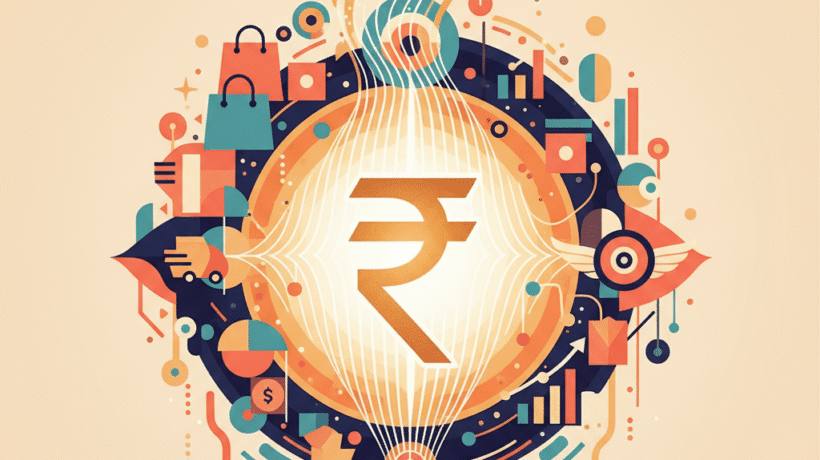India’s Festive GST Cuts 2025: Boosting Consumption, Compliance Ease, and Inflation Relief
Introduction
India’s festive season in 2025 has brought more than just celebrations—it’s driving a powerful wave of consumer spending and business relief. With the launch of GST 2.0 and rate cuts across key sectors like automobiles, daily staples, and insurance, both consumers and businesses are experiencing tangible savings. Coupled with digital payment upgrades and compliance relaxations for small enterprises, these reforms are shaping a more inclusive, efficient, and growth-oriented tax ecosystem. As inflation eases and consumption surges, India’s financial landscape is entering a new era of simplified taxation and sustained growth.
Understanding the Festive GST Reforms
Concept Explanation
The Festive GST cuts under India’s GST 2.0 structure represent one of the most impactful fiscal moves of the year. By streamlining GST slabs to 5% and 18%, the government has eliminated multiple intermediate rates, reducing confusion and compliance costs for businesses. Essential goods—from staples to stationery—now fall under the 5% bracket, directly benefiting consumers and stimulating retail demand.
The reforms also extend beyond rates—businesses can now make GST payments via UPI and credit/debit cards, enhancing ease of payment and digital adoption across India’s MSME sector.
Indian Financial Context
Simplified GST Structure
The GST Council’s latest reforms, effective from late September 2025, have simplified the tax landscape by phasing out 12% and 28% slabs. Key consumer sectors such as automobiles, quick commerce, and rental vehicles have seen significant rate reductions. For MSMEs and retailers, the streamlined two-slab system minimizes classification disputes and allows faster input tax credit reconciliation.
Compliance Relaxations for Small Businesses
In a major relief measure, businesses with annual turnover below ₹2 crore are now exempt from filing annual GST returns. Additionally, the government clarified the treatment of secondary discounts—a move expected to reduce tax litigation—and introduced a three-year limit for filing delayed returns, ensuring predictability in tax administration.
These measures enhance compliance convenience for small traders and startups, aligning with India’s broader digital governance agenda.
Digital Payment Integration
With the rollout of UPI-based and card-based GST payments, taxpayers across multiple states can now complete filings seamlessly. This not only improves tax collection efficiency but also supports India’s Digital India mission and the shift toward a fully integrated online compliance ecosystem.
Impact on Inflation
Recent CPI (Consumer Price Index) data indicates that a combination of GST rate cuts and falling vegetable prices is likely to reduce retail inflation for September 2025. Lower taxes on essentials improve household purchasing power, while steady input costs benefit small manufacturers and service providers during the festive demand cycle.
Global Perspective
Globally, tax simplification and digital compliance systems are recognized as key enablers of economic growth. Countries such as Singapore and the UAE have long leveraged unified indirect tax frameworks to encourage transparency and investor confidence. India’s GST 2.0 follows a similar trajectory, modernizing its tax ecosystem to match international efficiency benchmarks and attract greater FDI inflows.
Practical Insights, Benefits & Challenges
Benefits:
Simplified two-rate GST structure (5% and 18%) reduces compliance burden.
MSMEs gain ease of filing and digital payment flexibility.
Lower consumer prices boost festive and retail demand.
Streamlined policies increase transparency and reduce litigation risks.
Inflation relief supports both consumers and businesses in the short term.
Challenges:
Businesses must update accounting systems to match new tax codes.
Awareness about new compliance exemptions remains low in smaller markets.
Transition from older GST rates may temporarily impact financial reporting.
Case Example:
A local automobile dealer in Maharashtra reported a 15% increase in sales during the first week of October, attributing the boost to lower GST on mid-range models and improved consumer sentiment.
Key Takeaways
GST 2.0 simplifies slabs to 5% and 18%, boosting transparency.
Festive GST cuts drive strong consumption growth across sectors.
MSMEs benefit from exemptions and new digital payment options.
Inflation likely to ease with reduced tax burden and food prices.
Businesses should align systems with the new compliance timelines.
Conclusion
India’s Festive GST reforms in 2025 mark a decisive step toward a more efficient, inclusive, and growth-driven financial ecosystem. With lower rates, digital compliance tools, and targeted relief for small businesses, the reforms are shaping a future-ready taxation model. As the festive demand surge meets lower inflation, India’s economy is set for a season of sustainable expansion.
🔹 Stay compliant and future-ready with expert support — visit meracompliance.com
FAQ'S
Q1: What are the main GST rate changes under GST 2.0?
The GST 2.0 structure simplifies slabs to just 5% and 18%, with essentials like food items, stationery, and daily staples in the lower bracket.
Q2: Can taxpayers now pay GST using UPI or cards?
Yes. Multiple states now allow UPI and card payments for GST filings, making compliance faster and more accessible for MSMEs.
Q3: Who is exempt from annual GST returns in 2025?
Businesses with an annual turnover under ₹2 crore are now exempt from filing annual GST returns, reducing paperwork and compliance costs.
Q4: How will these GST reforms impact inflation?
The rate cuts, along with declining vegetable prices, are expected to bring down retail inflation for September 2025, supporting household budgets and demand.
Q5: How do these changes affect small businesses?
MSMEs benefit from simplified filing, fewer disputes, and digital payment options—helping them save time and maintain smoother cash flows.
Q6: Where can businesses get help with GST compliance and registration?
Visit meracompliance.com
or expert assistance with GST filing, business registration, and compliance management.





